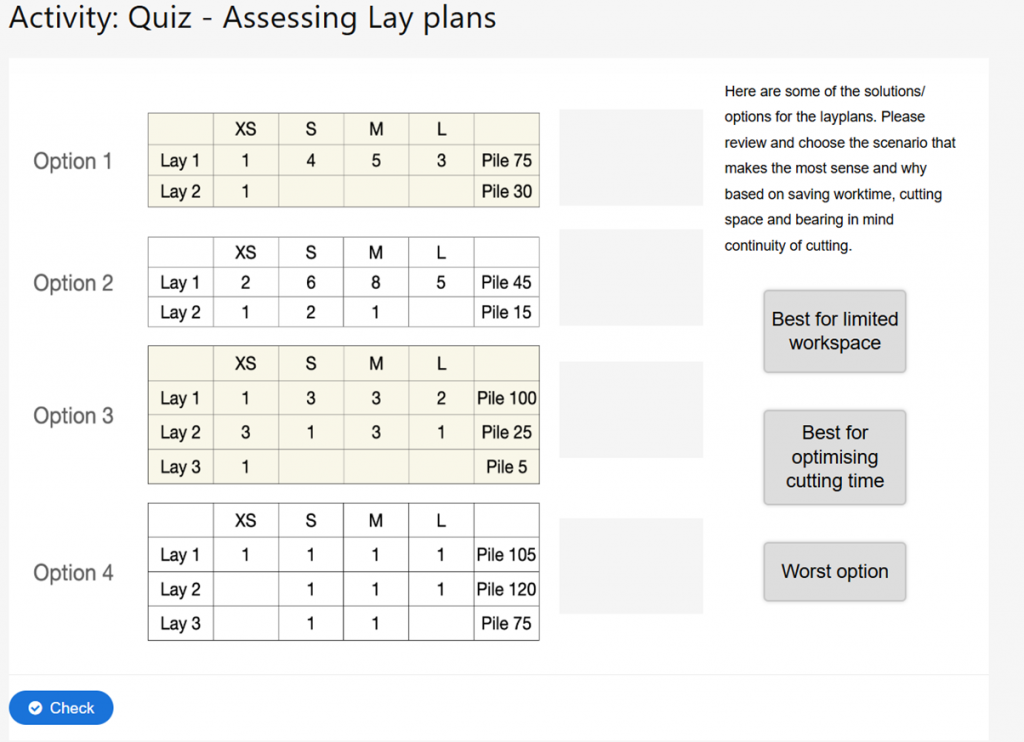How it was developed
The courses were developed by a cross-functional team within LCF’s Digital Learning group: Kirsty Nevett (Course Leader), Dr. Jhon Benavides Navarro (Learning Technologist), Jacqueline Downs and Giacomo Occhipinti (Digital Learning Producers), Adam Whitcomb, and Alex Marshall (Video Content Producers), plus the academic teams of the MA Strategic Fashion Marketing and the MSc Fashion Analytics and Forecasting . At the time, many academic staff had limited experience in the science of learning, online delivery or content creation. Likewise, our video content development team had little experience of designing fully online lessons. Through this collaboration, both groups developed new skills – from learning design to video production – that now inform their ongoing practice.
Research & Academic Guides
We adopted an iterative model combining asynchronous, synchronous, and post-synchronous learning. This approach was supported on our research on the Science of Learning, and its application to the development of learning materials. Below you can find some of the the research that guided our project and some of the guidelines for academic staff to produce content:
Research
Academic Guides
- The FBS Online Asynchronous Lessons Content Production Guide, outlining how to create focused, motivational video content (5–6 minutes), scaffolded readings, and higher-order quiz tasks aligned with Bloom’s Taxonomy. The guide also introduces ethical prompts for using AI tools like ChatGPT, focusing on transparency and originality.
- The Pre-Recorded Videos Principles and Guidelines, combining pedagogical and production expertise to ensure clarity, consistency, and effectiveness.
- The Synchronous Online Pedagogies report, offering a structured approach to live teaching focused on interaction and real-world application.
Staff Development
An essential part of the course development was to help academic staff to become aware of our current understanding of the science of learning and how it can be applied to development of courses and learning materials. To achieve this we developed a series of workshops and team away days to keep an ongoing conversation around these topics and their application. Below you can find some details of these workshops.
The Science of Learning: The Role of Motivation, Journeys of Deliberate Practice & the Development of Advanced Expertise.
This workshop was part of a project to train academic staff about the science of learning and measure their reaction to it. This workshop was key in getting the interest of the course leaders on the importance of this subject for the development of effective learning journeys in HE. The workshop covered the topics developed in our research (see section above). The Miro board below, used in the workshop, shows the structure of the workshop and the content covered.
The Four Pillars of Learning and the Development of Learning Activities
This workshop focused on introducing staff to the research of Stanislas Dehaene about the four pillars of learning: attention, active engagement, error feedback and consolidation. And how this research can be applied to the development of learning activities. We delivered this workshop for all academic staff involved in the courses when we were about to start the development of learning resources. In the document below you can find the slides and notes of the presentation that guided this workshop, to get an idea of how was run.

Learning Resources Development
The development of learning resources involved a close collaboration among the digital learning team, the academic teams and the video producers. The content of each week was deconstructed in an asynchronous online lesson to consolidate operational knowledge, followed by a synchronous seminar to consolidate the development of expertise (see details in the Course Design Section).
Here are some examples from one of the asynchronous weekly Moodle Lessons for the Data Driven Fashion Fashion Product Innovation unit.
The video opposite is the introduction to a Moodle Lesson on Zero Waste Pattern Cutting Methods. It is filmed in a pattern cutting studio. Click on the image on the right to watch the video.

The lesson then includes a second video, then two activities that are designed to test and cement learners’ understanding of what they have watched and allow them to put knowledge into practice. The first activity (left) requires free text calculations; the second activity (below) requires matching text to the options. This variety of activity types supports success by helping to keep learners engaged and appealing to their intrinsic motivation. In both cases learners can retake the activity and can find out if they were correct or not.

Below is an example from another asynchronous Moodle Lesson in this unit, on Circularity:
As part of this asynchronous Moodle Lesson, students watched three videos and completed three exercises, as per this Lesson menu opposite.

The final exercise (below) was a branching exercise, where students responded to questions about the Circular Product Stream. They received feedback for each option they selected, confirming correct answers, or advising on why their chosen answer was incorrect. This instant feedback allowed for the further development of understanding, and helped to motivate learners to continue cementing their knowledge on the topic, as they received information about their responses which they could evaluate and amend as necessary. The branching exercise also required deeper engagement, as learners had to navigate the different questions and responses, and make decisions on where to go next in the activity.
The first screenshot below shows the question, followed by the advice given for an incorrect answer:

Correct answer feedback:
Incorrect answer feedback:



